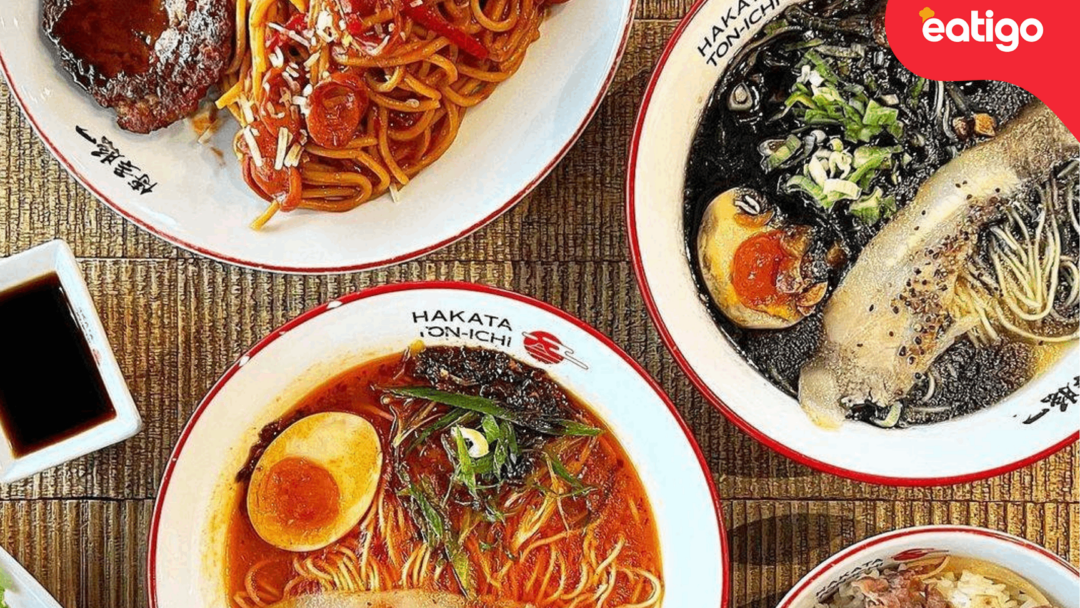35 Best japanese food with japanese restaurant 2025

BYEMAR25 – Get a PHP100 cash voucher instantly!
November 11, 2024
Where to eat in Tagaytay: top 10 restaurant
January 11, 2025Japanese cuisine is renowned for its exquisite flavors, meticulous preparation, and cultural significance. As we look ahead to 2025, here are 35 must-try Japanese dishes, along with notable restaurants where you can savor these culinary delight
Best Traditional Japanese Food
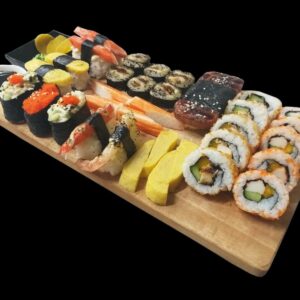
1.Sushi
Sushi, the iconic Japanese dish, has captivated food lovers worldwide with its perfect balance of simplicity, flavor, and artistry. Whether you’re a seasoned sushi enthusiast or a curious beginner, there’s always something new to discover in the world of sushi.
Types of Sushi You Must Try
- Nigiri: Hand-pressed rice topped with fresh seafood like tuna, salmon, or shrimp.
- Sashimi: Thinly sliced raw fish served without rice, highlighting the freshness of the seafood.
- Maki: Rolled sushi wrapped in nori (seaweed), often filled with fish, vegetables, or even fruits.
- Temaki: Cone-shaped rolls filled with rice, fish, and other ingredients for a fun, handheld experience.
- Uramaki: Inside-out rolls with rice on the outside and seaweed on the inside.
2.Sashimi
Sashimi is a cornerstone of Japanese culinary tradition, celebrated for its simplicity, elegance, and focus on the natural flavors of the freshest seafood. This exquisite dish, which consists of thinly sliced raw fish or seafood, offers a sensory experience that highlights the artistry and respect for ingredients that define Japanese cuisine.
Popular Types of Sashimi
- Tuna (Maguro): A sashimi staple, known for its rich flavor and buttery texture.
- Salmon (Sake): A popular choice for its vibrant color and mild taste.
- Yellowtail (Hamachi): A favorite for its firm texture and slightly sweet flavor.
- Octopus (Tako): Chewy and mildly sweet, often paired with citrus or soy sauce.
- Scallop (Hotate): Delicate and sweet, offering a melt-in-your-mouth experience.
- Sea Urchin (Uni): Creamy and briny, loved by adventurous foodies.
3.Ramen
Ramen, Japan’s beloved noodle soup, has captured the hearts (and stomachs) of food enthusiasts around the world. This iconic dish is more than just a meal—it’s a cultural experience, a culinary art, and the ultimate comfort food.
Popular Types of Ramen
- Shoyu (Soy Sauce): A savory broth flavored with soy sauce, offering a light yet rich taste.
- Shio (Salt): The lightest ramen broth, typically clear and delicate.
- Miso: A hearty and flavorful broth made with fermented soybean paste, often served with thicker noodles.
- Tonkotsu (Pork Bone): A creamy, rich broth made by boiling pork bones for hours, loved for its depth of flavor.
- Tsukemen: A dipping ramen, where noodles and broth are served separately for a customizable experience.
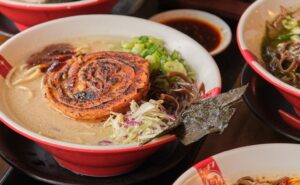
4.Tempura
Tempura, one of Japan’s most iconic dishes, is a testament to the elegance and simplicity of Japanese cuisine. Light, crispy, and utterly satisfying, this deep-fried delicacy has earned its place as a favorite among food lovers worldwide.
Popular Types of Tempura
- Shrimp (Ebi): The most iconic tempura ingredient, known for its juicy, tender bite.
- Sweet Potato (Satsumaimo): A sweet and earthy option with a satisfying crunch.
- Eggplant (Nasu): Soft and flavorful, with a crispy outer layer.
- Fish (Sakana): White fish fillets are commonly used for a mild and flaky tempura.
- Green Beans (Ingen): A vibrant and crunchy vegetable option.
- Kakiage: A mixture of shredded vegetables and seafood fried together for a flavorful medley.
5.Yakitori
Yakitori, the beloved Japanese dish of grilled chicken skewers, is a culinary masterpiece that captures the essence of simplicity and flavor. Perfectly grilled over charcoal, yakitori offers a delightful mix of smoky aroma, juicy meat, and savory seasonings.
Popular Types of Yakitori
- Negima: Skewers of chicken thigh interspersed with green onions for a burst of flavor.
- Tsukune: Juicy chicken meatballs, often glazed with tare sauce.
- Tebasaki: Grilled chicken wings with a crispy, smoky finish.
- Reba: Chicken liver, known for its creamy texture and rich taste.
- Momo: Tender chicken thigh, one of the most popular yakitori options.
- Sunagimo: Chicken gizzard, offering a delightful chewiness and savory flavor.
6.Tonkatsu
Tonkatsu, Japan’s iconic breaded and deep-fried pork cutlet, has become a beloved dish worldwide for its crispy exterior and tender, juicy interior. Served with a side of shredded cabbage, rice, and a tangy dipping sauce, tonkatsu is the ultimate comfort food that satisfies cravings and warms the soul.
Variations of Tonkatsu
- Hire Katsu: Made with pork fillet, this version is leaner and more tender.
- Rosu Katsu: Prepared with pork loin, offering a juicier cut with a touch of fat.
- Katsu Curry: Tonkatsu served with a flavorful Japanese curry sauce over rice.
- Katsu Sando: A tonkatsu sandwich made with soft bread and tonkatsu sauce.
- Cheese Katsu: A stuffed variation where melted cheese is enclosed in the pork cutlet.

7.Okonomiyaki
Okonomiyaki, often referred to as Japan’s “savory pancake,” is a delightful dish that combines creativity, flavor, and fun. A staple in Japanese comfort food, okonomiyaki is made with a batter of flour, eggs, and shredded cabbage, and is cooked with a variety of toppings to suit your taste.
Regional Styles of Okonomiyaki
- Osaka Style: The most common style, where all the ingredients are mixed into the batter before grilling.
- Hiroshima Style: Features layered ingredients, including noodles, and is topped with a fried egg.
- Tokyo Style: Often smaller and thinner, served as monjayaki with a gooier texture.
8.Udon
Udon, Japan’s thick and chewy wheat noodle, is a beloved comfort food known for its versatility and satisfying texture. Whether served in a warm, flavorful broth or chilled with dipping sauce, udon embodies the simplicity and elegance of Japanese cuisine.
Popular Udon Dishes
- Kake Udon: Simple and classic, served in a light soy-based broth with green onions.
- Tempura Udon: Topped with crispy tempura, often shrimp or vegetables, for added texture.
- Curry Udon: Udon noodles served in a rich and mildly spicy Japanese curry sauce.
- Zaru Udon: Chilled noodles served with a soy-based dipping sauce, perfect for warm weather.
- Nabeyaki Udon: A hot pot-style udon with a mix of toppings like egg, tempura, and vegetables.
9.Soba
Soba, Japan’s traditional buckwheat noodles, is a culinary treasure celebrated for its simplicity, versatility, and health benefits. Whether served chilled with dipping sauce or in a warm, flavorful broth, soba offers a unique and satisfying dining experience.
Popular Udon Dishes
- Zaru Soba: Chilled noodles served on a bamboo tray with a soy-based dipping sauce, perfect for summer.
- Kake Soba: Simple and comforting, served in a hot, light soy-flavored broth.
- Tempura Soba: Paired with crispy tempura for a delightful combination of textures.
- Tororo Soba: Topped with grated yam, offering a unique, creamy texture.
- Kitsune Soba: Served with sweet fried tofu (aburaage), a flavorful and filling choice.
10.Shabu-Shabu
Shabu-shabu, Japan’s beloved hotpot dish, is more than just a meal—it’s a fun, interactive dining experience that brings people together. Named for the sound of swishing ingredients in boiling broth, shabu-shabu is a feast of fresh meats, seafood, and vegetables cooked tableside and enjoyed with flavorful dipping sauces.
Shabu-shabu is a Japanese hotpot dish where thinly sliced meats, seafood, and vegetables are cooked briefly in a pot of simmering broth. Diners then dip the cooked items into savory sauces, such as sesame-based goma or tangy ponzu, creating a delightful balance of flavors.
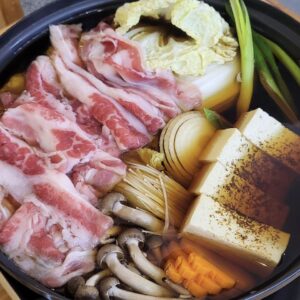
11.Sukiyaki
Sukiyaki is one of Japan’s most cherished hotpot dishes, known for its rich, sweet-savory broth and an array of fresh, high-quality ingredients. Traditionally enjoyed during colder months or special occasions, sukiyaki is a warm, comforting meal that brings people together around the table.
Sukiyaki is a Japanese hotpot dish prepared by simmering thinly sliced beef, vegetables, tofu, and noodles in a sweet soy-based broth. It is typically cooked at the table in a shallow iron pot and served hot. The dish is often accompanied by a beaten raw egg, which diners use as a dipping sauce to enhance the flavor and texture of each bite.
12.Kaiseki
Kaiseki is Japan’s most refined and artistic form of dining, offering a multi-course meal that showcases the harmony of flavors, textures, and presentation. Rooted in tradition and steeped in elegance, kaiseki is a celebration of seasonal ingredients and culinary craftsmanship.
Kaiseki is a traditional Japanese dining experience consisting of multiple small courses, each meticulously prepared to highlight the natural flavors of seasonal ingredients. Often enjoyed in ryokans (traditional inns) or fine-dining restaurants, kaiseki reflects the artistry and attention to detail that define Japanese cuisine.
13.Donburi
Donburi, a classic Japanese comfort food, is a delicious and satisfying rice bowl dish topped with a variety of flavorful ingredients. Perfect for quick meals or hearty feasts, donburi captures the essence of Japanese cuisine with its simplicity and versatility.
Popular Types of Donburi
- Gyudon (Beef Bowl): Thinly sliced beef and onions simmered in a savory-sweet sauce.
- Oyakodon (Parent-and-Child Bowl): Chicken and egg simmered in dashi and soy sauce, served over rice.
- Katsudon (Pork Cutlet Bowl): Breaded and deep-fried pork cutlet cooked with egg and sauce.
- Unadon (Eel Bowl): Grilled eel glazed with a sweet soy-based sauce.
- Tendon (Tempura Bowl): Crispy tempura served on a bed of rice with a drizzle of sauce.
- Kaisendon (Seafood Bowl): A fresh assortment of sashimi atop rice, often garnished with wasabi and soy sauce.
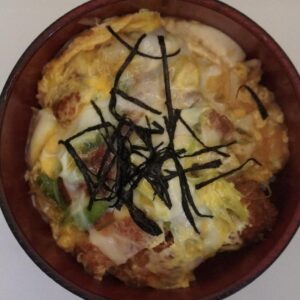
14.Onigiri
Onigiri, Japan’s iconic rice ball, is a simple yet versatile dish that has been a staple in Japanese cuisine for centuries. Wrapped in nori (seaweed) and filled with a variety of savory ingredients, onigiri is a perfect snack, meal-on-the-go, or lunchbox favorite.
Popular Types of Onigiri
- Umeboshi (Pickled Plum): A tangy and salty filling with a refreshing kick.
- Salmon: Grilled or salted salmon for a rich, savory bite.
- Tuna Mayo: A creamy blend of tuna and mayonnaise, loved for its comforting flavor.
- Okaka (Bonito Flakes): Seasoned with soy sauce, offering a savory and umami-packed filling.
- Tarako (Cod Roe): A salty and slightly spicy filling for adventurous palates.
- Kombu (Seaweed): Simmered kelp that adds a touch of sweetness and umami.
15.Miso soup
Miso soup, one of Japan’s most iconic dishes, is a simple yet deeply nourishing bowl that embodies the essence of Japanese cuisine. Made with a blend of miso paste, dashi broth, and various ingredients, this warm and savory soup has been a staple in Japanese households and restaurants for centuries.
Miso soup is a traditional Japanese dish made by combining miso paste (fermented soybean paste) with dashi (a light, umami-rich broth). Often served as a side dish or starter, it includes a variety of add-ins like tofu, seaweed, and green onions, creating a flavorful and comforting experience.
16.Takoyaki
Takoyaki, the beloved Japanese street food, is a crispy-on-the-outside, soft-on-the-inside ball of deliciousness filled with savory octopus and topped with flavorful garnishes. Originating from Osaka, this iconic snack has captured the hearts (and taste buds) of food enthusiasts worldwide.
Takoyaki, meaning “grilled octopus,” is a popular Japanese dish made by cooking a batter filled with diced octopus, green onions, tempura scraps, and pickled ginger in special round molds. Once cooked to golden perfection, takoyaki is topped with takoyaki sauce, mayonnaise, bonito flakes, and seaweed powder, creating a symphony of flavors and textures.
17.Gyoza
Gyoza, Japan’s beloved dumplings, are a delightful blend of crispy, chewy, and savory flavors. These pan-fried delights, filled with juicy meat and vegetables, have become a staple in Japanese cuisine and a favorite among food lovers worldwide.
Popular Types of Gyoza
- Yaki Gyoza (Pan-Fried): The most popular version, featuring a crispy bottom and soft top.
- Sui Gyoza (Boiled): A lighter option, served in a savory broth or with a dipping sauce.
- Age Gyoza (Deep-Fried): Crispy and golden all over, perfect for a crunchy snack.
- Vegetarian Gyoza: Filled with ingredients like mushrooms, tofu, or mixed vegetables for a meat-free option.
- Cheese Gyoza: A modern twist with gooey cheese filling or topping.
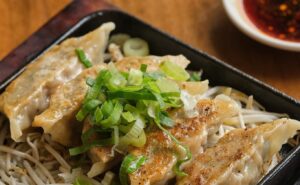
18.Karaage
Karaage, Japan’s version of fried chicken, is a flavorful and crispy dish that has become a global favorite. Known for its juicy, marinated meat and perfectly golden crust, karaage is a staple in Japanese cuisine and a popular choice for meals, snacks, or party platters.
Popular Variations of Karaage
- Classic Chicken Karaage: Marinated in soy sauce, sake, and ginger, then fried to perfection.
- Spicy Karaage: With added chili or spice for those who enjoy a kick of heat.
- Yuzu Karaage: Infused with a hint of citrus for a refreshing twist.
- Boneless Karaage: Easy to eat and ideal for sharing.
- Seafood Karaage: Made with shrimp or squid for a unique take on this classic dish.
19.Unagi no Kabayaki
Unagi no Kabayaki, a cherished dish in Japanese cuisine, highlights the art of grilling and the depth of flavor in freshwater eel. Coated in a glossy soy-based tare sauce and grilled to perfection, this delicacy is both a celebration of culinary tradition and a flavorful treat.
Unagi no Kabayaki features filleted freshwater eel skewered and grilled over charcoal while being basted with a sweet-savory tare sauce. The result is a tender, smoky eel with a caramelized glaze that’s typically served over rice, creating a comforting and satisfying dish.
20.Chawanmushi
Chawanmushi, a delicate and velvety steamed egg custard, is one of Japan’s most refined culinary delights. Served in a small cup and infused with umami-rich flavors, this dish is a testament to the elegance and subtlety of Japanese cuisine.
Chawanmushi, meaning “steamed in a teacup,” is a savory egg custard dish made by blending eggs with dashi (a light Japanese broth) and seasoning it with soy sauce and mirin. This mixture is then steamed to create a silky, pudding-like texture. Hidden within are a variety of ingredients such as shrimp, chicken, mushrooms, and ginkgo nuts, adding bursts of flavor and texture.
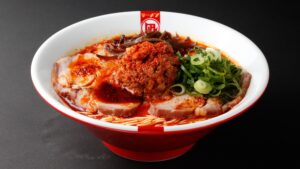
21.Natto
Natto, Japan’s iconic fermented soybean dish, is a polarizing yet nutritious staple that has been a part of Japanese cuisine for centuries. Known for its unique aroma, sticky texture, and earthy flavor, natto is celebrated for its health benefits and traditional roots.
Natto is made by fermenting soybeans with a bacteria called Bacillus subtilis. The result is a sticky, stringy, and slightly pungent dish that is typically enjoyed as a breakfast food in Japan. Despite its strong flavor and distinct texture, natto is beloved for its versatility and incredible health benefits.
22.Oden
Oden, a traditional Japanese hotpot dish, is a comforting and flavorful meal enjoyed especially during the colder months. With a variety of ingredients simmered in a light and savory dashi broth, oden is a symbol of togetherness and culinary tradition.
Oden is a Japanese hotpot dish featuring an assortment of ingredients such as fish cakes, daikon radish, boiled eggs, and tofu, all simmered in a light soy-flavored dashi broth. The slow cooking process infuses each ingredient with the broth’s delicate umami flavor, making oden a warming and satisfying dish.
23.Nikujaga
Nikujaga, Japan’s classic meat and potato stew, is the epitome of homestyle comfort cooking. With its rich, savory-sweet broth and tender ingredients, this dish has been a staple in Japanese households for generations.
Nikujaga, meaning “meat and potatoes,” is a Japanese stew made with thinly sliced beef or pork, potatoes, onions, and carrots simmered in a flavorful broth of soy sauce, sugar, mirin, and dashi. This dish strikes a perfect balance between sweet and savory, offering a warm and satisfying meal that feels like home.

24.Hiyayakko
Hiyayakko, a traditional Japanese appetizer, is a simple yet elegant dish that highlights the delicate flavor of chilled tofu. Served with a variety of toppings and a drizzle of soy sauce, Hiyayakko is a light and refreshing dish perfect for warm days or as part of a multi-course Japanese meal.
Hiyayakko is a classic Japanese dish made with cold, silken tofu as the base, topped with garnishes such as grated ginger, green onions, and bonito flakes. This minimalist dish is known for its fresh taste and smooth texture, making it a staple in Japanese cuisine.
25.Yakiniku
Yakiniku, Japan’s iconic grilled meat dish, is more than just a meal—it’s a social and interactive dining experience that brings people together around the table. Known for its high-quality cuts of meat and flavorful dipping sauces, yakiniku has become a favorite for gatherings and special occasions.
Yakiniku, meaning “grilled meat” in Japanese, involves cooking bite-sized pieces of beef, pork, chicken, or seafood on a tabletop grill. Often accompanied by savory dipping sauces (tare), yakiniku allows diners to cook and season their meat to their preference, making every meal a personalized culinary experience.
26.Taiyaki
Taiyaki, Japan’s beloved fish-shaped dessert, is a delightful treat that combines charm and flavor in every bite. Traditionally filled with sweet red bean paste, this iconic street food has captured the hearts of food lovers worldwide with its playful shape and endless filling options.
Taiyaki is a fish-shaped pastry made from a pancake-like batter that is poured into a special mold and filled with sweet or savory ingredients. The name “taiyaki” translates to “grilled sea bream,” inspired by the shape of the fish that symbolizes good fortune in Japanese culture.
27.Dorayaki
Dorayaki, a beloved Japanese dessert, is a simple yet satisfying treat consisting of two fluffy pancakes sandwiched together with a sweet filling. Known for its classic red bean paste filling, this traditional confection has evolved with modern flavors, making it a favorite for all ages.
Dorayaki is a Japanese confection made from two soft, honey-flavored pancakes (castella-style) filled with a variety of sweet fillings. Traditionally, it features anko (red bean paste), but modern variations include custard, chocolate, and matcha cream. Its soft texture and rich flavors make it a timeless snack or dessert.
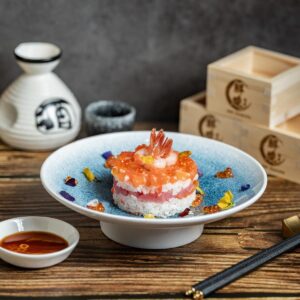
28.Mochi
Mochi, a traditional Japanese rice cake, is a beloved treat known for its soft, chewy texture and versatility in both sweet and savory dishes. Made from glutinous rice that is steamed and pounded into a smooth, sticky dough, mochi has deep cultural significance in Japan and is enjoyed during festivals, celebrations, and as an everyday snack.
Mochi is a staple in Japanese cuisine, crafted from glutinous rice (mochigome), which is steamed and vigorously pounded until it reaches a stretchy, smooth consistency. The result is a pliable dough that can be shaped, filled, or flavored in countless ways, making it a versatile base for various dishes and desserts.
Popular Types of Mochi
- Daifuku: Mochi filled with sweet red bean paste, fruits, or cream.
- Mochi Ice Cream: A modern creation where mochi encases flavored ice cream.
- Yatsuhashi Mochi: Cinnamon-flavored mochi often served as a Kyoto specialty.
- Kinako Mochi: Dusted with roasted soybean flour and sugar for a nutty flavor.
- Savory Mochi: Grilled mochi brushed with soy sauce or wrapped in nori.
29.Dango
Dango, a beloved Japanese snack, is a simple yet flavorful treat made from rice flour and typically served on skewers. Often enjoyed with a sweet or savory glaze, dango is a staple in Japanese festivals and tea ceremonies, symbolizing tradition and togetherness.
Dango are chewy rice dumplings made from a mix of rice flour and water, formed into small round balls, and skewered for easy serving. These versatile dumplings are often grilled or boiled and paired with a variety of sauces or toppings, making them a popular treat for all ages.
Popular Types of Dango
- Mitarashi Dango: Glazed with a sweet soy sauce mixture, offering a balance of sweet and savory.
- Anko Dango: Topped with sweet red bean paste for a classic flavor.
- Yaki Dango: Grilled for a smoky, caramelized finish.
- Hanami Dango: Colorful dango (pink, white, and green) often enjoyed during cherry blossom season.
- Kinako Dango: Coated with roasted soybean flour for a nutty and slightly sweet taste.
30.Matcha Desserts
Matcha desserts, infused with the rich and earthy flavor of finely ground green tea, have become a global sensation. From ice cream to cakes and pastries, these treats beautifully blend the bold taste of matcha with the sweetness of dessert, creating a unique culinary experience.
Matcha desserts are sweets made with matcha, a finely ground powder of specially grown and processed green tea leaves. Known for its vibrant green color and slightly bitter, umami-rich taste, matcha adds depth and sophistication to a variety of desserts, both traditional and modern.
Popular Matcha Desserts
- Matcha Ice Cream: Creamy and refreshing, with the perfect blend of sweetness and matcha’s signature bitterness.
- Matcha Cheesecake: A rich and decadent dessert with a green tea twist.
- Matcha Mochi: Soft and chewy rice cakes filled with matcha-flavored cream or paste.
- Matcha Tiramisu: A fusion dessert layering matcha-soaked sponge with mascarpone cream.
- Matcha Cookies: Buttery cookies infused with green tea flavor, often paired with white chocolate.

31.Katsu Curry
Katsu Curry, a hearty and flavorful dish, combines two of Japan’s most beloved foods: crispy breaded cutlets (katsu) and rich, savory Japanese curry. This comforting meal, served over steamed rice, is a fusion of textures and flavors that has captured the hearts of food lovers worldwide.
Katsu Curry features a crispy, golden-fried pork or chicken cutlet served atop a bed of rice and smothered in thick Japanese curry. Unlike Indian or Thai curries, Japanese curry is mildly spiced and slightly sweet, offering a perfect balance to the crunchy katsu.
32.Omurice
Omurice, a delightful fusion of Japanese and Western cuisines, is a dish that combines fluffy omelette and flavorful ketchup-seasoned fried rice. Often shaped into a neat dome or wrapped in a golden omelette, omurice is a comforting meal that is both visually appealing and delicious.
Omurice, short for “omelette rice,” is a Japanese comfort food featuring fried rice flavored with ketchup or demiglace sauce, encased in a perfectly cooked omelette. Often garnished with a drizzle of ketchup or other sauces, it’s a family favorite and a staple in Japanese yoshoku (Western-style) cuisine.
33.Hayashi Rice
Hayashi Rice, a classic yoshoku (Western-style) Japanese dish, is a comforting meal that combines tender beef, onions, and mushrooms in a rich, savory demi-glace sauce, served over a bed of steamed rice. This dish is a fusion of Japanese and Western flavors, making it a favorite for family meals and casual dining.
Hayashi Rice features thinly sliced beef and vegetables simmered in a thick, flavorful demi-glace-based sauce. Served over fluffy white rice, the dish offers a perfect balance of umami, sweetness, and richness, making it a go-to comfort food in Japan.
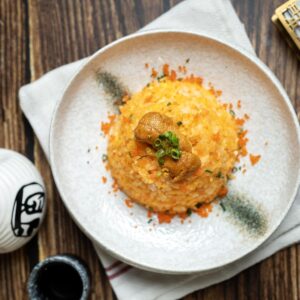
34.Hakata Tonkotsu Ramen
Hakata Tonkotsu Ramen, originating from Fukuoka in Japan, is a legendary ramen dish renowned for its creamy pork bone broth, thin noodles, and rich umami flavor. This signature dish has captured the hearts of ramen lovers worldwide, offering a hearty and comforting dining experience.
Hakata Tonkotsu Ramen is a specialty noodle dish featuring a broth made by simmering pork bones for hours until it becomes rich, creamy, and packed with flavor. Served with thin, firm noodles and a variety of toppings, it’s a perfect combination of taste, texture, and aroma.
35.Kitsune Udon
Kitsune Udon, a classic Japanese noodle dish, is beloved for its simple yet satisfying combination of thick udon noodles in a savory dashi broth, topped with sweetened fried tofu. This dish is a staple in Japanese cuisine and holds a special place in the hearts of locals and visitors alike. In this blog, we’ll explore the origins, ingredients, and where to enjoy Kitsune Udon in 2025.
Kitsune Udon, which translates to “fox udon,” features thick, chewy udon noodles served in a light, flavorful broth made from dashi, soy sauce, and mirin. The star of the dish is the fried tofu topping, known as aburaage, which is simmered in a sweet soy-based sauce, adding a delightful contrast to the savory broth.
Recommend 10 best japanese restaurant
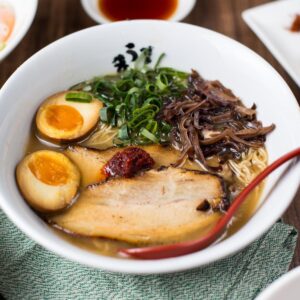
1.Uma Uma
Uma Uma Ramen is a renowned Japanese-inspired eatery celebrated for its authentic Hakata-style ramen, crafted from a family recipe that has been cherished for over 60 years. This casual dining destination offers a diverse menu of flavorful ramen dishes, naturally rich in umami and completely MSG-free, alongside other comforting favorites such as yakitori skewers, sushi rolls, donburi bowls, and more.
Location: https://maps.app.goo.gl/jSVWFKAc3ctqY5db9
2.Ramen Nagi
Ramen Nagi is a haven for noodle enthusiasts, offering authentic Japanese ramen that delights the palate. This casual dining spot provides convenient access to a wide range of ramen options, making it a go-to destination for mall-goers seeking delicious meals. Among its best-sellers are the classic, traditionally prepared Butao King and the satisfyingly crispy Chicken Karaage.
Location: https://maps.app.goo.gl/GrsqMYGohFTtVhbo9
3.Hakata Ton-ichi
Hakata Ton-Ichi is a ramen shop designed for hardworking individuals seeking comfort after a long day. Unlike other ramen establishments that come with premium prices, Hakata Ton-Ichi offers the same rich, flavorful bowls at a more affordable cost. Their mission is to provide the city’s workers with delicious ramen, not as an occasional indulgence, but as an accessible and comforting everyday meal.
Location: https://maps.app.goo.gl/CksNtzvfCyVAaiqq7
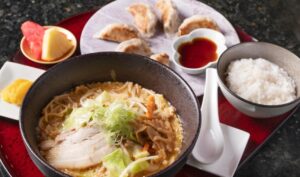
4.Enbu
Enbu @ Okada Manila, one of the hotel’s newest dining destinations, serves an extensive selection of classic Japanese dishes, perfectly complemented by their sake and wine offerings. Alongside these flavorful culinary creations, guests can indulge in breathtaking views of The Fountain while enjoying interiors adorned with authentic Japanese elements, creating the ideal ambiance for a festive and memorable kushiyaki experience.
Location: https://maps.app.goo.gl/1oM9RdA2pEztbnRL6
5.Tempura Japanese Grill
Discover an extensive array of Japanese culinary delights at Tempura Japanese Grill. Situated in the heart of Manila, this restaurant exemplifies the artistry and tradition of Japanese cuisine. Upon entering, guests are greeted by a welcoming atmosphere that seamlessly blends contemporary design with traditional Japanese elements.
Dining at Tempura Japanese Grill is more than just a meal—it’s an immersive experience that captivates the senses and nurtures the spirit. From the meticulous craftsmanship in each dish to the attentive care of the staff, every detail is thoughtfully designed to provide an exceptional dining experience.
Location: https://maps.app.goo.gl/jcKFczb2n4GqmFQX6
6.Katsu House Japanese Fusion Restaurant
Katsu House Restaurant is a charming dining spot celebrated for its exceptional Japanese cuisine, with a focus on crispy and flavorful katsu dishes. Featuring expertly breaded chicken and delicate seafood options, the menu presents a delightful selection of traditional Japanese comfort food, prepared with precision and care.
Location: https://maps.app.goo.gl/pxEtf6zahwuktTD37
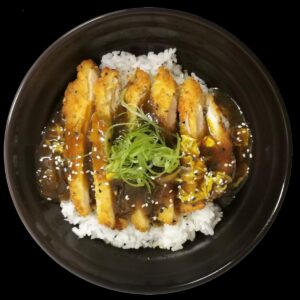
7.Izakaya Tago Japanese Restaurant
Izakaya Tago: Bringing Authentic Japanese Flavors to Lipa City
Izakaya Tago is a true gem in Lipa City, offering an authentic taste of Japan’s rich culinary heritage. Known for its traditional izakaya-style dining, this restaurant provides a cozy and vibrant setting, ideal for savoring delectable Japanese dishes and drinks in the company of friends and family.
Location: https://maps.app.goo.gl/zB723n4GjLSCfzEL7
8.Ippudo
Ippudo, a globally renowned Japanese restaurant, brings its rich ramen heritage to Manila, offering an unparalleled dining experience for noodle lovers. Founded in Fukuoka, Japan, Ippudo is celebrated for its creamy tonkotsu (pork bone) broth, perfectly cooked noodles, and exceptional attention to detail, making it a go-to destination for authentic Japanese ramen.
Location: https://maps.app.goo.gl/yMEAzd7jwB6LnZn99
9.Yabu
Yabu: House of Katsu is a beloved Japanese restaurant in Manila, specializing in expertly crafted katsu dishes. Known for its perfectly breaded, golden-crisp cutlets paired with unlimited sides, Yabu elevates the dining experience with a focus on quality, tradition, and flavor.
Location: https://maps.app.goo.gl/3pJZo8s9uXyLrbyD8
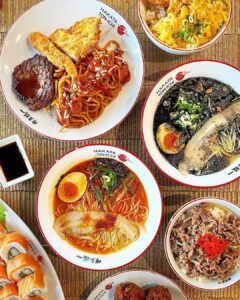
10.Teppanya
Teppanya Japanese Restaurant is a premier dining destination in Manila, celebrated for its authentic teppanyaki-style cooking. Offering a perfect blend of entertainment and culinary excellence, Teppanya provides a memorable experience where skilled chefs prepare your meal right before your eyes on a hot iron griddle.
Location: https://maps.app.goo.gl/q7ppUM54mnh5QFd59
Summary
Japanese cuisine is celebrated for its refined flavors, meticulous craftsmanship, and deep cultural roots. Looking forward to 2025, explore these 35 must-try Japanese dishes and discover notable restaurants where you can indulge in these culinary treasures.

